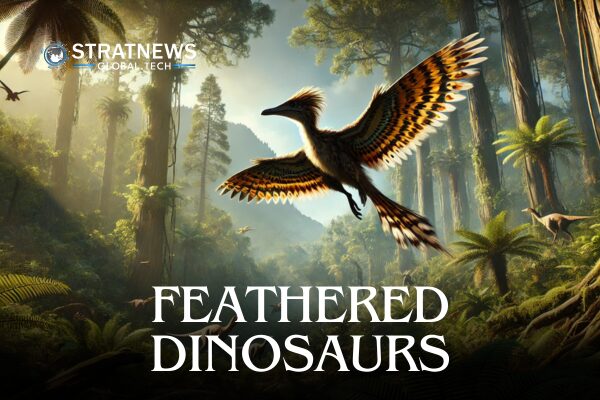New Research Unveils the Dinosaur Origins of Bird Wings
A groundbreaking study in evolutionary biology has traced the origins of bird wings back to feathered dinosaurs from the Jurassic Period. These findings shed light on how early dinosaurs evolved proto-wings, setting the stage for the development of bird flight.
Feathered Dinosaurs: The Proto-Wing Architects
During the Jurassic Period, certain dinosaurs, particularly a group called Pennaraptoran dinosaurs, developed early versions of wings known as proto-wings. These proto-wings were composed of pennaceous feathers but were too small for powered flight.
Pennaraptorans represent a fascinating evolutionary stage where dinosaurs were experimenting with structures that would later evolve into functional wings. Though their exact behaviours remain a mystery, these ancient creatures likely used their proto-wings for purposes other than flight, hinting at early adaptations that would eventually lead to the skies.
The Role of Proto-Wings in Hunting
Researchers introduced the “flush-pursue hypothesis” to explain how dinosaurs may have used their proto-wings during hunting. This theory suggests that dinosaurs used their feathered appendages to flush out and capture prey, similar to how some modern insectivorous birds hunt today.
To explore this theory, scientists turned to robotic palaeontology, creating a robot named “Robopteryx” based on the dinosaur Caudipteryx. This innovative model allowed them to simulate movements and gain insights into the potential hunting behaviours of feathered dinosaurs. The combination of robotics and evolutionary biology offers a fresh perspective on how proto-wings may have functioned in these prehistoric hunters.
From Dinosaurs to Modern Birds
The study bridges the gap between dinosaurs and modern birds, illustrating how adaptations in physiology and behaviour over millions of years resulted in the ability to fly. While proto-wings may not have enabled flight, they marked the first steps in a long evolutionary process, transforming ground-dwelling creatures into the graceful birds we see today.
This discovery not only deepens our understanding of bird flight origins but also highlights the intricate evolutionary journey from feathered dinosaurs to modern avian species.


